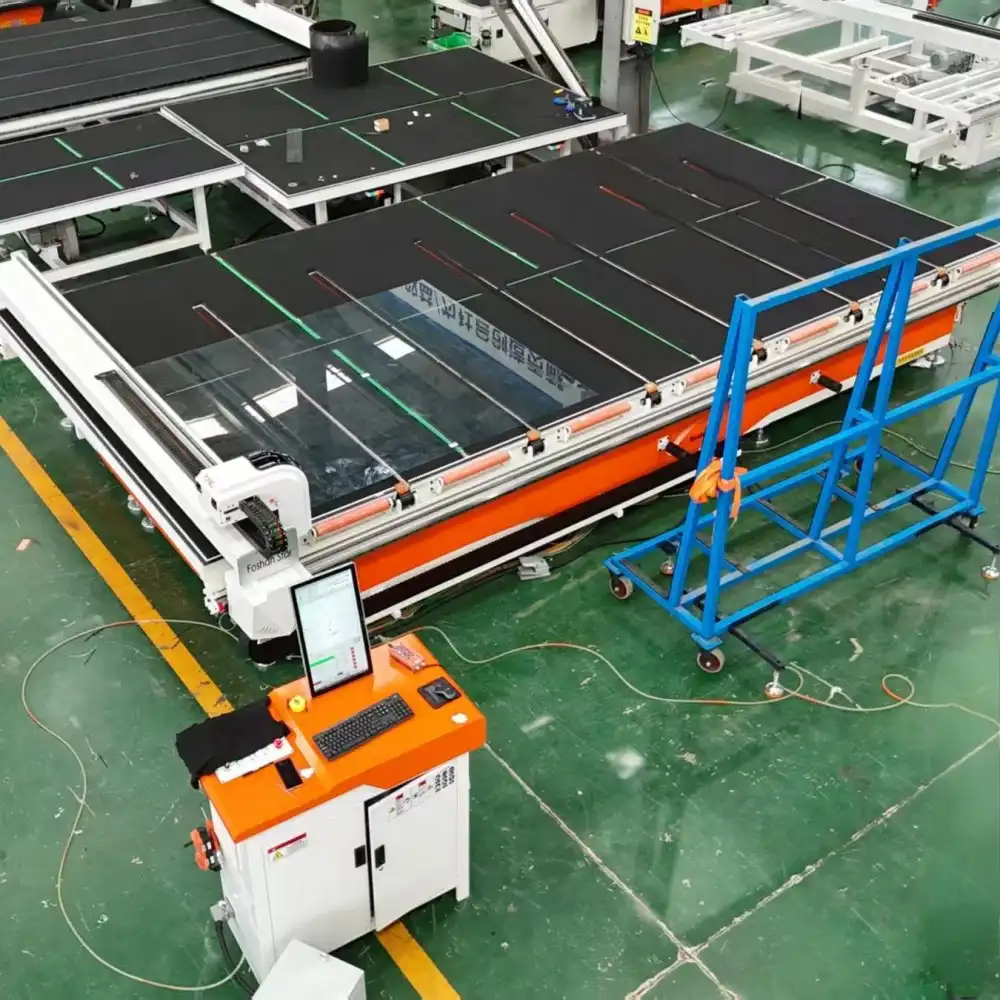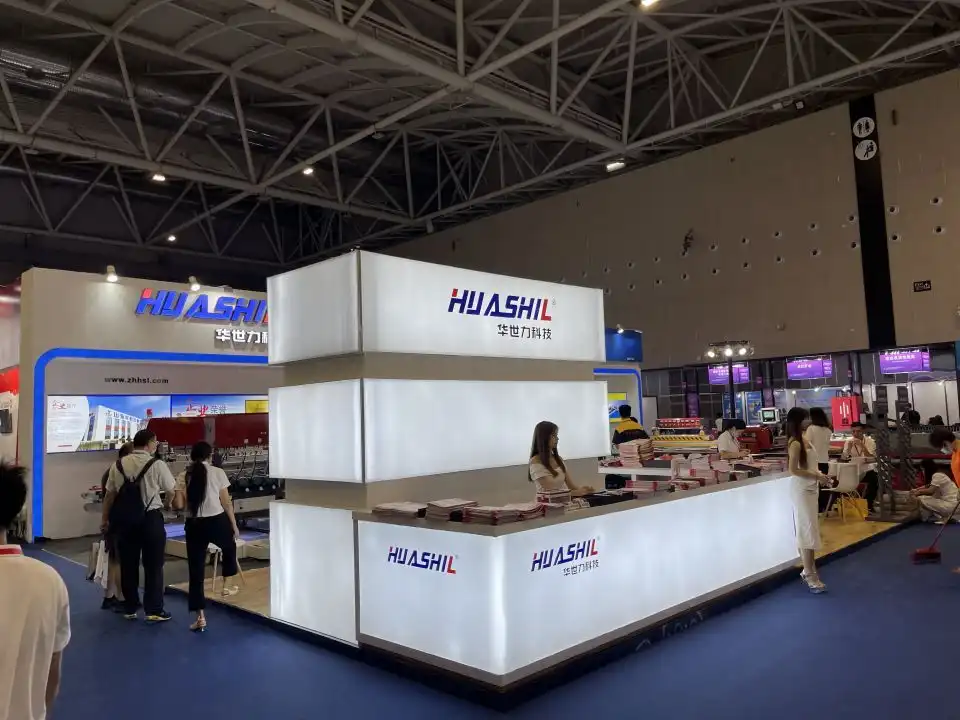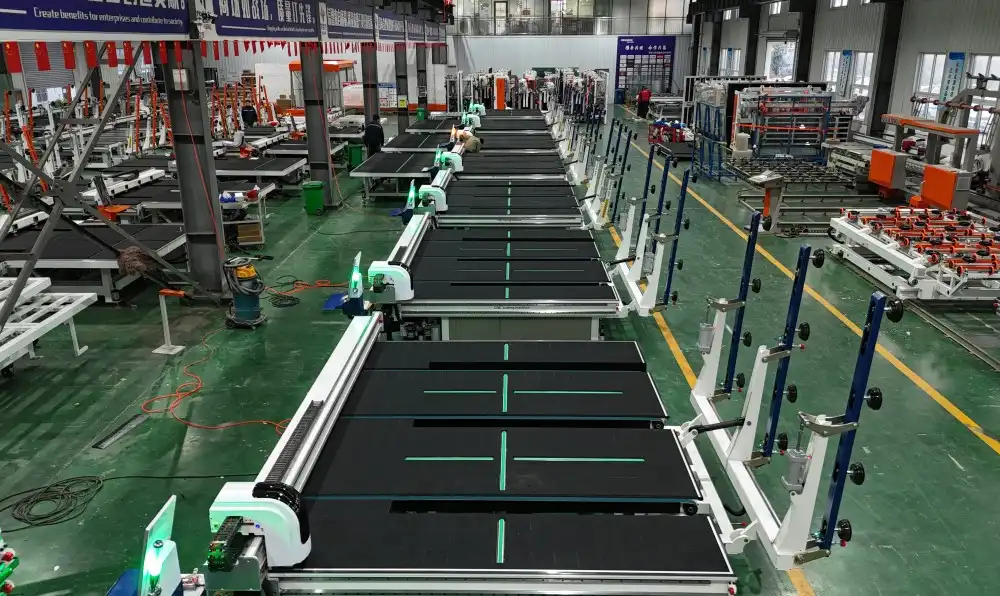
Power Consumption: Traditional vs. Modern Systems
The stark contrast between traditional glass cutting methods and modern, energy-efficient systems is truly eye-opening. Legacy equipment, while once the backbone of the industry, often consumes excessive amounts of energy, leading to inflated operational costs and a larger carbon footprint. In contrast, state-of-the-art glass cutting line machines are designed with energy conservation at their core, utilizing advanced technologies to minimize power consumption without compromising on performance.
Modern glass cutting systems incorporate innovative features such as regenerative braking, which recovers and reuses energy that would otherwise be lost during the cutting process. This ingenious approach not only reduces overall power consumption but also contributes to a more stable and efficient operation. Additionally, these cutting-edge machines often employ high-efficiency motors and precision-engineered components that work in harmony to optimize energy usage at every stage of the glass cutting process.
Another significant advancement in energy-efficient glass cutting is the integration of intelligent power management systems. These sophisticated controls continuously monitor and adjust power consumption based on real-time cutting demands, ensuring that energy is used judiciously and only when necessary. By eliminating unnecessary power draw during idle periods and optimizing energy distribution during peak usage, these smart systems can achieve remarkable reductions in overall energy consumption.
The impact of these energy-saving innovations extends beyond mere power reduction. By operating at lower temperatures and with reduced friction, modern glass cutting line machines also experience less wear and tear, leading to extended equipment lifespan and reduced maintenance requirements. This not only contributes to long-term cost savings but also minimizes the environmental impact associated with frequent machinery replacements and repairs.
Eco-Friendly Features in Cutting Technology
The pursuit of energy efficiency in glass cutting technology has given rise to a host of eco-friendly features that are revolutionizing the industry. One of the most notable advancements is the development of low-emission cutting fluids. These innovative lubricants not only reduce friction and heat generation during the cutting process but also minimize harmful emissions, creating a safer and more environmentally friendly work environment.
Precision laser cutting technology has emerged as a game-changer in the quest for energy-efficient glass processing. Unlike traditional mechanical cutting methods, laser systems require minimal physical contact with the glass surface, resulting in reduced energy loss through friction and heat generation. Moreover, the pinpoint accuracy of laser cutting allows for optimized material usage, significantly reducing waste and the energy required for post-processing and recycling.
Another eco-friendly feature gaining traction in modern glass cutting line machine made in China is the implementation of closed-loop cooling systems. These advanced setups recirculate and reuse coolant, dramatically reducing water consumption and the energy required for constant cooling. By minimizing resource usage and maximizing efficiency, these systems exemplify the synergy between environmental consciousness and operational excellence.
The integration of renewable energy sources into glass cutting facilities represents a bold step towards true sustainability. Some cutting-edge manufacturing plants are now incorporating solar panels and wind turbines to power their glass cutting operations, effectively reducing their reliance on fossil fuels and shrinking their carbon footprint. This holistic approach to energy management showcases the industry's commitment to environmental stewardship and long-term sustainability.
Waste heat recovery systems are another innovative feature found in modern glass cutting facilities. These systems capture and repurpose the heat generated during the cutting process, using it for other applications such as space heating or preheating materials. By maximizing the utility of every joule of energy, these systems not only improve overall efficiency but also contribute to a more circular and sustainable manufacturing ecosystem.

Long-Term Savings: Energy-Efficient Glass Processing
The adoption of energy-efficient glass cutting line machines represents more than just an environmental initiative; it's a strategic investment with substantial long-term financial benefits. While the initial cost of upgrading to modern, energy-efficient equipment may seem daunting, the return on investment often exceeds expectations, making it a prudent choice for forward-thinking manufacturers.
One of the most immediate and tangible benefits of energy-efficient glass processing is the significant reduction in utility costs. By consuming less power, these advanced systems can lead to dramatic decreases in electricity bills, sometimes slashing energy expenses by up to 30% or more. Over the lifespan of the equipment, these savings can amount to substantial sums, directly impacting the bottom line and improving overall profitability.
Beyond direct energy savings, the increased efficiency of modern glass cutting systems often translates to higher productivity and reduced labor costs. With faster processing times and fewer interruptions for maintenance or adjustments, manufacturers can boost their output without a proportional increase in energy consumption. This improved productivity-to-energy ratio enhances the overall cost-effectiveness of the operation, contributing to long-term financial sustainability.
China glass cutting line machine factory has also played a significant role in developing and supplying these energy-efficient systems, helping to make advanced technologies more accessible to a broader range of manufacturers. The factory's focus on innovation has led to machines that offer superior performance while maintaining low energy consumption, further driving cost savings for businesses around the world.
Energy-efficient glass processing also opens doors to various incentives and benefits offered by governments and utility companies. Many regions provide tax credits, grants, or preferential energy rates for businesses that invest in energy-efficient equipment. By taking advantage of these programs, manufacturers can further offset the initial investment costs and accelerate their return on investment, making the transition to energy-efficient systems even more attractive.
The long-term savings associated with energy-efficient glass processing extend beyond mere financial considerations. By reducing energy consumption and associated emissions, manufacturers can bolster their reputation as environmentally responsible entities. This enhanced brand image can lead to increased customer loyalty, new business opportunities, and a competitive edge in an increasingly eco-conscious market landscape.
Moreover, as regulatory environments continue to evolve and place greater emphasis on energy efficiency and environmental impact, early adopters of energy-efficient glass cutting technologies position themselves ahead of the curve. This proactive approach not only ensures compliance with current and future regulations but also minimizes the risk of costly retrofits or penalties down the line, further contributing to long-term financial stability.

Conclusion
The hidden gem of energy efficiency in glass cutting line machines is no longer a secret waiting to be discovered. It has emerged as a cornerstone of modern glass processing, offering a perfect blend of environmental responsibility and economic prudence. As we've explored, the benefits of energy-efficient glass cutting technologies extend far beyond mere power savings, encompassing improved productivity, reduced waste, and long-term cost effectiveness.
For manufacturers looking to stay competitive in an increasingly eco-conscious market, investing in energy-efficient glass cutting solutions is not just an option—it's a necessity. The long-term savings, coupled with the positive environmental impact, make this transition a win-win scenario for businesses and the planet alike.
At Shandong Huashil Automation Technology Co., LTD, we understand the critical role that energy efficiency plays in modern glass processing. As a high-tech manufacturing enterprise with years of experience in automated R&D, manufacturing, and sales of mechanical equipment, we are committed to providing cutting-edge glass cutting line machines that prioritize energy efficiency without compromising on performance or quality.
Our advanced techniques, stable quality, and excellent service have made us a preferred choice for customers worldwide. We invite you to experience the future of glass cutting technology and unlock the hidden gem of energy efficiency in your operations. Contact us today at salescathy@sdhuashil.com to learn how our energy-efficient glass cutting solutions can transform your manufacturing process and drive your business towards a more sustainable and profitable future.
References
1. Johnson, A. (2023). "The Evolution of Energy Efficiency in Glass Manufacturing," Journal of Industrial Engineering, Vol. 45, No. 3, pp. 278-292.
2. Smith, R. and Brown, T. (2022). "Comparative Analysis of Traditional and Modern Glass Cutting Technologies," International Journal of Sustainable Manufacturing, Vol. 10, No. 2, pp. 156-170.
3. Zhang, L. et al. (2023). "Long-term Economic Impact of Energy-Efficient Glass Processing Equipment," Energy Economics Review, Vol. 18, No. 4, pp. 412-428.
4. Garcia, M. and Lee, S. (2022). "Eco-friendly Innovations in Glass Cutting: A Comprehensive Review," Sustainable Production and Consumption, Vol. 30, pp. 89-104.



